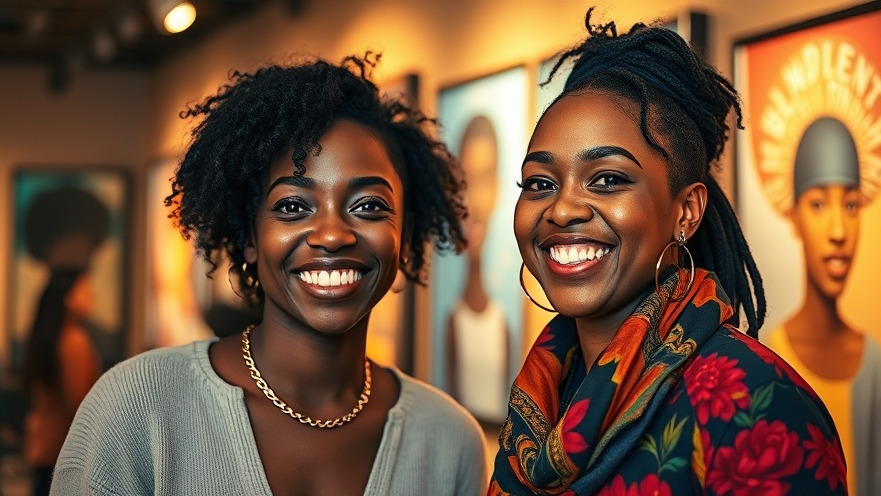
Discovering Black Identity Through Art at ZuCot Gallery
On July 25, 2025, the ZuCot Gallery opened its doors to the public for the vibrant exhibition titled “Dear Black People…A Love Letter,” heralded as an unapologetically Black artistic space. This exhibition, which runs through August, features a compelling collection of 34 distinct pieces from six critically acclaimed artists: Georgette Baker, Aaron F. Henderson, Charly Palmer, Horace Imhotep, Jamaal Barber, and Michael Reese. Each artwork encapsulates the multifaceted narratives of Black identity, triumph, and resilience.
Owner Onaje Henderson describes this exhibit as both a celebration and a necessary reminder of the strength and history of the Black community. He states, “This love letter is specifically designed to take you through as almost a remembrance of who we are, who we’ve always been, no matter what’s going on in this country. We’ve always fought. We’ve always been and persevered through all things.” This sentiment resonates deeply in a time when understanding and honoring cultural heritage is imperative.
Exploring Themes of Resilience and Healing
The contributions from the featured artists delve deep into the themes of identity and empowerment, with a particular focus on nurturing the next generation. Jamaal Barber’s inspiring series “Our Boys” employs woodcut and linoleum prints to highlight the journey and struggles of Black boys, emphasizing their potential as protectors within society. Pieces such as “Our Boys Are Brave” serve not only as visual statements but also function as affirmations aimed at cultivating a sense of safety and community around young Black males. Barber’s approach transcends mere aesthetics, as he believes that “by healing and nurturing Black boys, we begin to mend the broken men in our communities.”
Historical Narratives: Reflecting on the Past
Georgette Baker’s artistic work serves as a poignant reminder of the historical narratives crucial to understanding Black resilience. Through her piece “Swing Low, Sweet Chariot,” Baker explores the duality of the song not just as a melody but as an embodiment of survival and coded language during the times of slavery. Her analysis suggests a broader perspective on how these spirituals fostered a sense of hope and direction amidst adversities.
A Vision for the Future: Empowering Through Art
The exhibition is not solely retrospective; it encourages viewers to engage with present challenges and envision a more empowered future. Aaron F. Henderson’s “Watermelon Man” is a vibrant gouache painting that celebrates the cultural strides taken by African Americans, presenting a unique perspective that is simultaneously celebratory and critical. Each piece invites visitors to reflect on current realities while recognizing the historical context behind them.
A Community Gathering at ZuCot
More than just an art show, “Dear Black People…A Love Letter” embodies a communal gathering space where locals and visitors can come together to honor and celebrate the rich heritage of the Black community. The exhibition is intertwined with the cultural tapestry of Atlanta, making it a must-visit for anyone interested in understanding the profound connections between art and identity.
Join the Conversation
As we reflect on the strong narratives presented, it is essential to engage actively with the values they represent. The call for healing, empowerment, and unity echoes throughout the exhibition, challenging all of us to partake in the ongoing conversation about Black identity.
Follow Atlanta Local Unplugged on Facebook @atlantalocalunplugged to keep updated about community events and insights that celebrate and uplift the rich culture of Atlanta.
 Add Row
Add Row  Add
Add 




Write A Comment